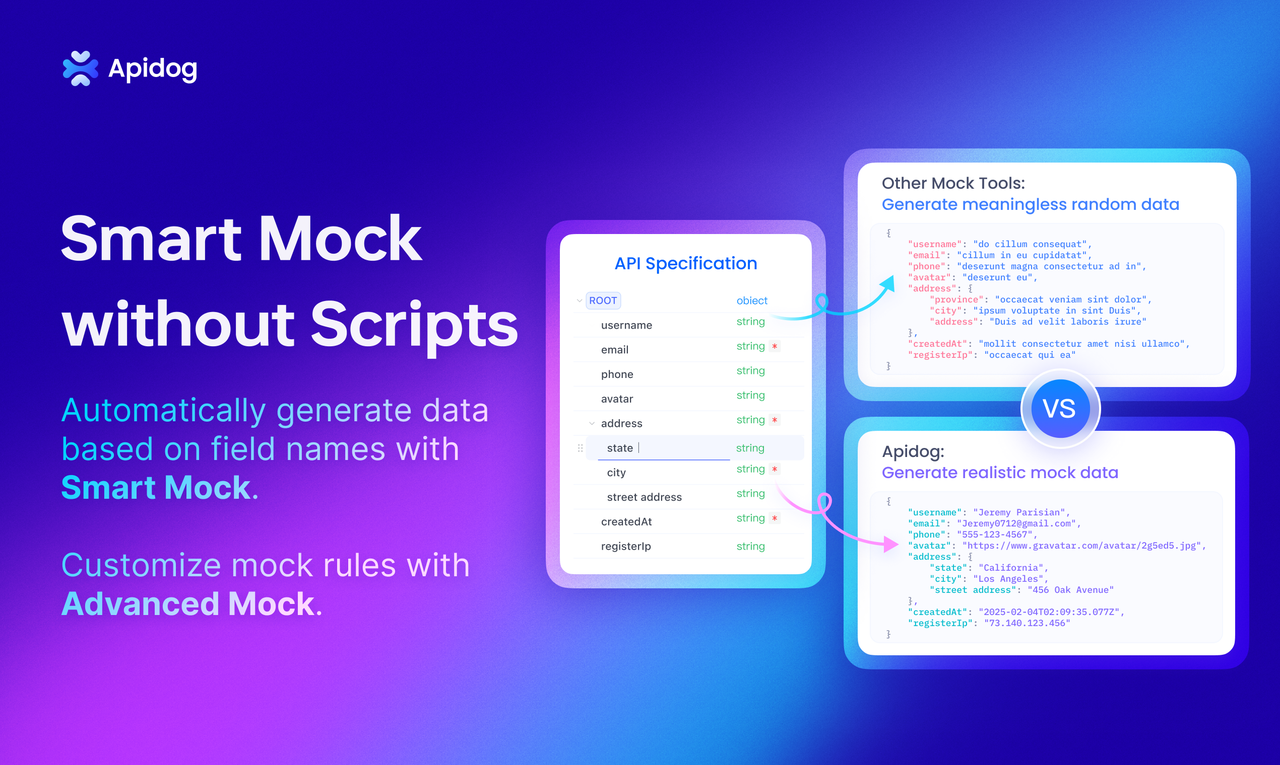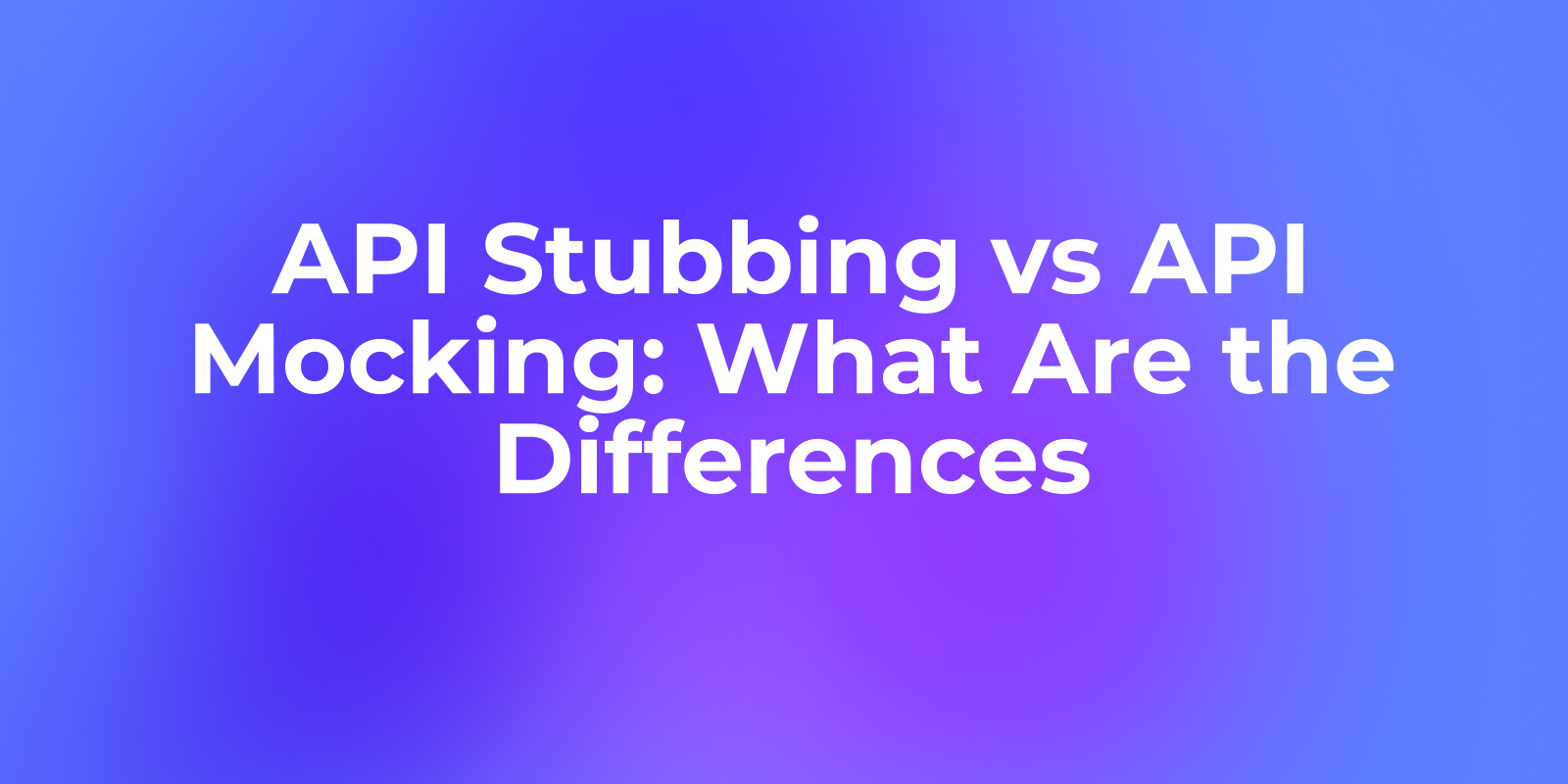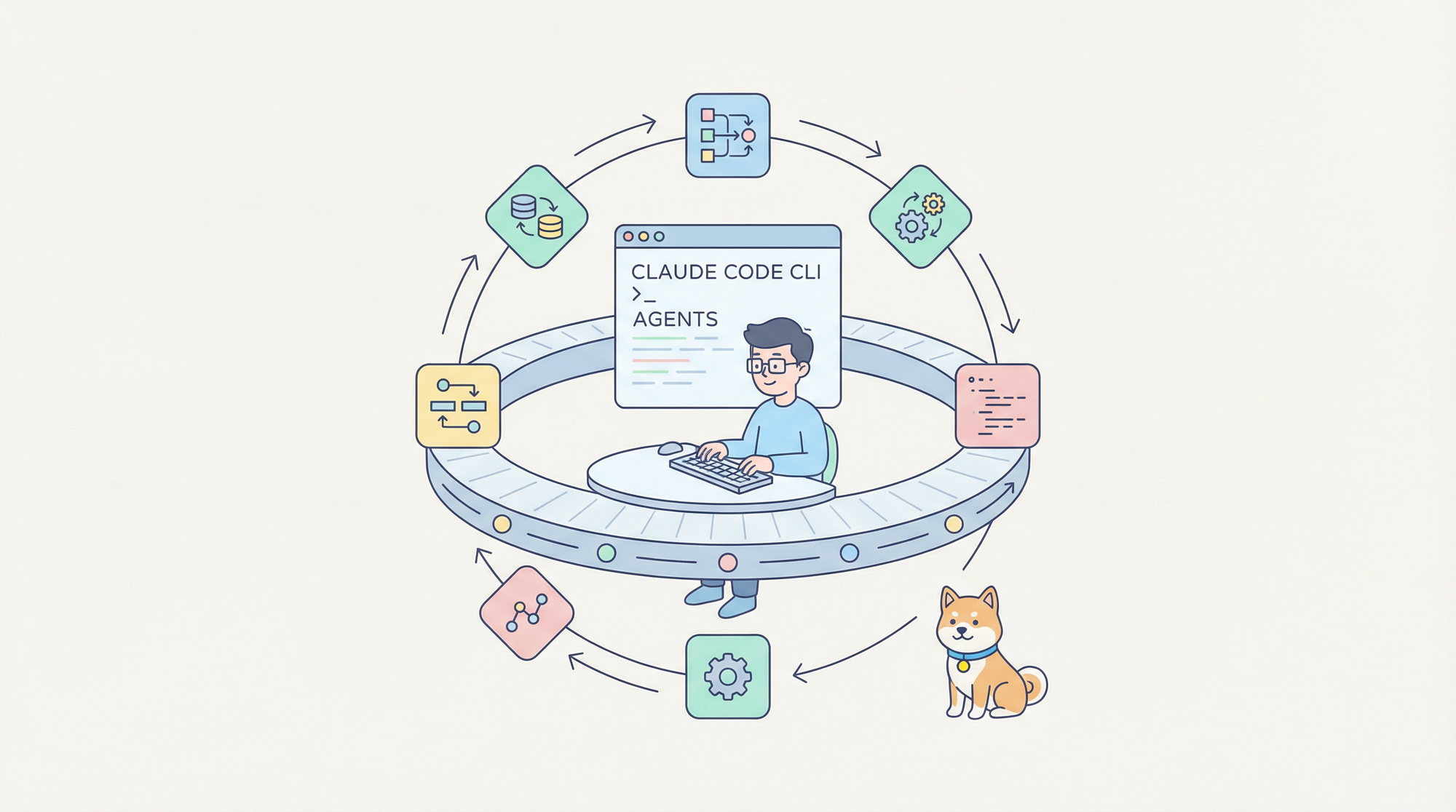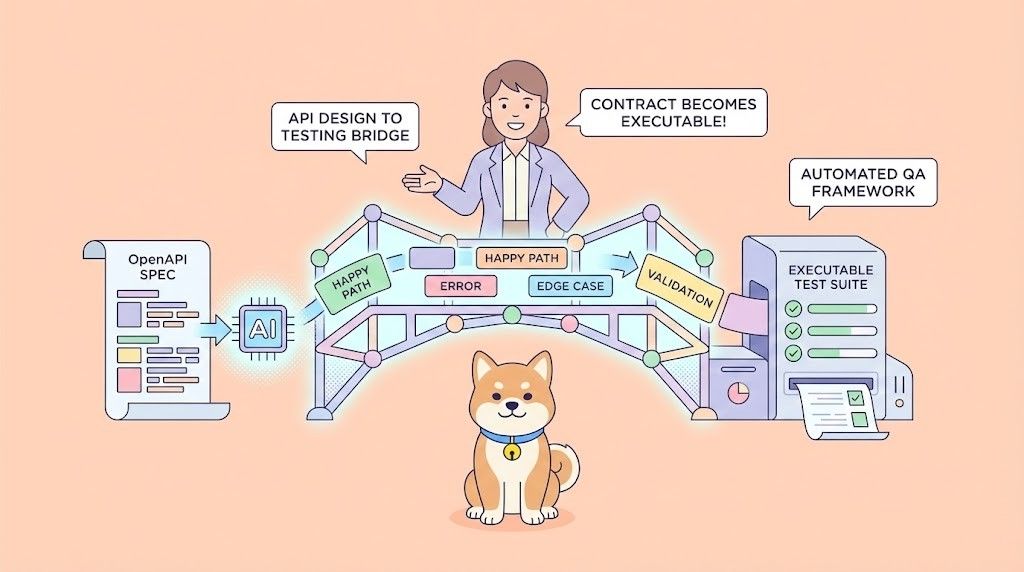API stubbing and API mocking often get tossed around interchangeably in development conversations. Understanding their distinct purposes is crucial for building robust, maintainable applications. This comprehensive guide delves into the fundamental differences between these two testing approaches, helping you make informed decisions that accelerate your development workflow.
What is API Stubbing? Understanding the Foundation of Controlled Testing
API stubbing represents a sophisticated testing technique where developers create simplified, controllable replacements for actual API endpoints. Think of stubs as the "lorem ipsum" of API development—they provide just enough functionality to keep your code running while you focus on the logic that matters most.
At its core, API stubbing serves as a predefined response mechanism that returns consistent, expected data regardless of input variations. When your application calls a stubbed API endpoint, it receives the same predetermined response every time, creating a stable testing environment free from external dependencies.
Key Characteristics of API Stubbing:
- Predictable responses: Always returns the same data for given inputs
- Minimal interaction tracking: Focuses on providing data, not monitoring behavior
- Lightweight implementation: Simple setup with immediate functionality
- Isolation-focused: Removes external service dependencies completely
Consider this practical scenario: Your e-commerce application needs to calculate shipping costs, but the shipping provider's API isn't ready yet. An API stub would consistently return "Standard shipping: $5.99" regardless of package weight, destination, or shipping method selected. This allows your frontend team to continue development while the actual shipping integration is being built.
The beauty of API stubbing lies in its simplicity. Unlike more complex testing approaches, stubs require minimal configuration and provide immediate value. They're particularly effective when you need to test business logic that depends on external data but doesn't care about the specifics of how that data was retrieved.
What is API Mocking? The Behavioral Verification Powerhouse
API mocking takes testing sophistication to the next level by not only providing responses but also tracking and verifying interactions. While stubs are content to simply answer when called, mocks are the meticulous observers of your API ecosystem—they remember every interaction, parameter, and timing detail.
API mocking tools create intelligent test doubles that can assert whether your code behaves correctly under various conditions. They verify that methods were called with the right parameters, in the correct sequence, and with appropriate frequency. This makes mocking invaluable for testing complex workflows where the interaction pattern is as important as the data itself.
Essential Features of API Mocking:
- Interaction verification: Confirms methods were called correctly
- Parameter validation: Ensures correct data was passed
- Call frequency tracking: Monitors how often endpoints are accessed
- Sequence validation: Verifies the order of API calls
- Behavioral assertions: Tests the "how" not just the "what"
Imagine testing a payment processing workflow where multiple APIs must be called in a specific sequence: validate payment method, check fraud detection, process charge, send confirmation email. API mocking ensures each step occurs in the right order with correct parameters, while also verifying that error conditions trigger appropriate fallback behaviors.
Modern API development platforms like Apidog have revolutionized mocking by providing visual interfaces that make complex behavioral testing accessible to developers of all skill levels. Instead of writing extensive mock configuration code, developers can define expected interactions through intuitive graphical interfaces.
API Stubbing vs API Mocking: The Critical Differences That Matter
Understanding when to use API stubbing versus API mocking requires recognizing their fundamental philosophical differences. While both techniques serve the broader goal of API testing, they address distinctly different aspects of software quality assurance.
Purpose and Intent
- API stubbing focuses on data provision—ensuring your code receives the information it needs to execute correctly. Stubs are passive participants in your tests, existing solely to provide consistent responses that allow your business logic to run uninterrupted.
- API mocking, conversely, emphasizes behavioral verification—confirming that your code interacts with external services correctly. Mocks are active participants that not only respond to requests but also evaluate whether those requests meet predefined expectations.
Implementation Complexity
- Stubbing offers remarkable simplicity. Most API testing tools can generate basic stubs automatically from API specifications, requiring minimal developer intervention. You define the expected response format, and the stub handles the rest.
- Mocking demands more sophisticated setup. You must define not only what responses to provide but also what interactions to expect, how to validate parameters, and what constitutes success or failure. This complexity pays dividends in comprehensive test coverage but requires more upfront investment.
Use Case Scenarios
Choose API stubbing when:
- Testing business logic that depends on external data
- Developing frontend components before backend APIs are ready
- Creating consistent test environments for integration testing
- Isolating units of code from external service dependencies
Choose API mocking when:
- Verifying correct API integration patterns
- Testing error handling and retry logic
- Validating security protocols and authentication flows
- Ensuring compliance with API rate limiting and usage policies
Apidog's Revolutionary Approach to API Mocking and Stubbing

Apidog has fundamentally transformed the landscape of API testing tools by providing the most comprehensive mocking platform available today. Unlike traditional solutions that require extensive manual configuration, Apidog's intelligent approach eliminates complexity while delivering enterprise-grade functionality that scales with your development needs.
Smart Mock: Zero-Configuration Intelligence
Apidog's Smart Mock technology represents a breakthrough in automated API mocking. This innovative feature generates realistic test data directly from your API specifications without requiring any additional configuration. The system intelligently analyzes three key data sources to create comprehensive mock responses:
- Automatic Name-Based Mocking: Apidog's core algorithm automatically matches mock data based on property types and names using sophisticated built-in matching rules. When your API specification includes fields like "email," "firstName," or "createdAt," the system automatically generates appropriate data types—email addresses, realistic names, and properly formatted timestamps.
- JSON Schema Compliance: All generated mock data automatically conforms to your API's JSON Schema constraints. If your specification defines string length limits, enumerated values, or numeric ranges, Apidog ensures mock responses respect these boundaries. For example, a "status" field with enumerated values ["active", "pending", "inactive"] will only return one of these valid options.
- Custom Field Override: When you need specific values for certain fields, Apidog allows targeted customization while maintaining smart generation for remaining fields. You can specify fixed values, use Faker.js expressions, or create complex dynamic content using concatenated expressions.
Advanced Mock Expectations for Complex Scenarios
Apidog's Mock Expectations feature provides unprecedented control over API mocking scenarios, enabling developers to simulate complex real-world conditions with precision:
- Conditional Response Logic: Create multiple mock expectations with different conditions based on request parameters. Apidog evaluates incoming requests against these conditions sequentially, returning the first matching expectation. This enables sophisticated testing scenarios like user role-based responses or geographic content variations.
- Dynamic Data Generation: Leverage the power of Faker.js and Nunjucks templating to create realistic, variable mock data. Generate arrays of user objects with randomized but realistic names, create time-series data with logical relationships, or simulate complex nested data structures that mirror production scenarios.
- Request Parameter Matching: Configure expectations based on query parameters, headers, cookies, path parameters, and JSON body content. This granular control enables testing of authentication flows, API versioning scenarios, and complex business logic dependencies.
Enterprise-Grade Mock Infrastructure
Apidog provides three distinct API mocking deployment options to meet diverse organizational requirements:
- Local Mock Servers: Perfect for individual developer workflows, local mock servers launch automatically with the Apidog client and provide immediate access to mock endpoints. This approach ensures zero-latency responses and complete offline functionality, making it ideal for frontend development scenarios where external dependencies shouldn't block progress.
- Cloud Mock Servers: Designed for distributed teams, Apidog's cloud mock infrastructure provides 24/7 availability regardless of individual team members' computer status. All team members share the same cloud mock URLs, promoting collaboration and consistency across development environments. Cloud mocks support token-based authentication for secure access control and can serve as reliable sandbox environments for public API documentation.
- Self-Hosted Runner Mock: For organizations with strict security requirements, Apidog's self-hosted runner option enables teams to deploy mock servers on their own infrastructure while maintaining full platform functionality. This approach provides complete data sovereignty while supporting large-scale automated testing scenarios.
Conclusion: Mastering API Testing for Modern Development
The distinction between API stubbing and API mocking represents more than technical terminology—it reflects different philosophies about software quality and development efficiency. While stubbing provides the foundation for isolated testing, mocking enables comprehensive behavioral verification that ensures production readiness.
Apidog has revolutionized this landscape by eliminating the traditional complexity barriers that prevented teams from adopting comprehensive API testing strategies. Through Smart Mock technology, visual configuration interfaces, and enterprise-grade infrastructure options, Apidog makes sophisticated testing accessible to development teams regardless of their testing expertise.
The platform's unified approach to API design, mocking, testing, debugging and documentation creates a seamless development experience that accelerates delivery timelines while improving application reliability. Whether you're building microservices architectures, mobile applications, or complex enterprise integrations, Apidog's comprehensive feature set adapts to your specific requirements.



